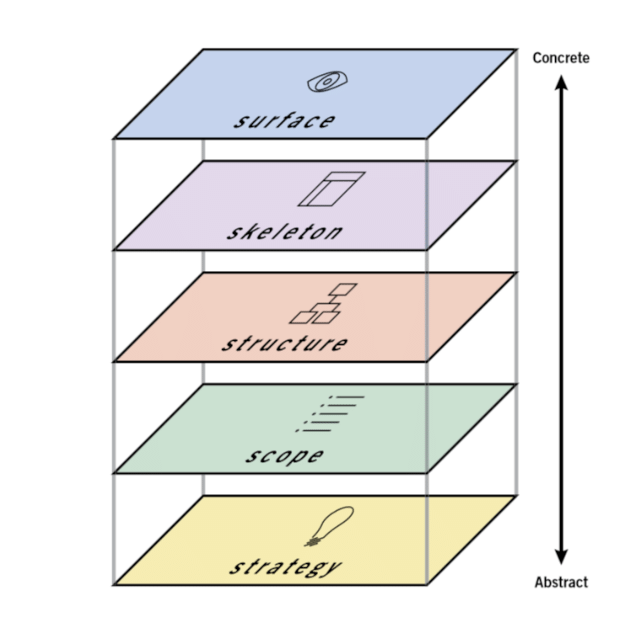The goal of any good product or service is to ensure that the end users have a positive experience. Investing in good UX can generate a huge return on investment for businesses. To achieve this there is a complex chain of decisions that impact the user experience in both big and small ways.
To ensure each decision is made at the appropriate point in the process – the 5 elements of UX design act as a guide for every project. These 5 elements of UX were developed by innovative user experience designer Jesse James Garrett, who wrote a book called The Elements of User of Experience.
The five elements align with the process of creating smart, well-considered user-centric designs and are essential for any project that requires a satisfying, cohesive user experience.
The bottom plane of the model is Strategy. As the most abstract and least constrained part of the project, this is where decisions should be made about what objectives the product should be designed to meet. These objectives should include the goals that both the clients and stakeholders behind the product want to meet and the goals of the users, who will eventually look to the product to solve specific problems for them.
After deciding on the strategy, the scope of the product can be determined and laid out in detail. It’s here that all a product’s features are decided upon, including the information that users can find and the functionality that users can interact with.
Once the scope of the product has been outlined, it’s time to start working on the structure. This is where each element of navigation will be decided, including where in the product each page can be found and where users can go after arriving at a given page. This involves defining the interaction design and information architecture of the product.
After deciding how the product will be structured, its skeleton can be designed. This entails deciding where the navigation and functional elements from the previous plane will go on each product page.
The wireframes and prototypes created on the skeleton plane will be used on the surface plane – the top and most concrete plane – to create the final pages for the product. At this stage, we’re concerned with the users’ sensory experience. This includes how the colours and textures employed in the visual design help them understand how to navigate through and interact with the site, and how the presentation of content draws their eye to key information.
